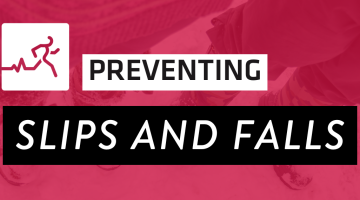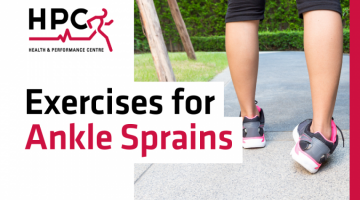Osteoarthritis | Guelph Physiotherapy

Osteoarthritis is a degenerative disorder that can affect any joint in the body but most often occurs in the knees, hips, lower back, hands, or neck.
A healthy joint consists of two bones, each covered with connective tissue known as articular cartilage. This cartilage layer allows smooth movement of joints and absorbs shock during weight-bearing activities, such as walking.
With osteoarthritis, there is a progressive loss of articular cartilage, which occurs until two bones are exposed to each other. This causes increased friction, which may also lead to erosion of the meniscus and bone spurs.
The loss of articular cartilage triggers pain through the nerve endings in the joint space. As the joint becomes less mobile, the surrounding muscles become less supportive, resulting in considerable loss of function.
What are the Causes of Osteoarthritis?
The causes of osteoarthritis can be divided into two main categories:
Primary osteoarthritis: This type of osteoarthritis is related to increasing age and is quite prevalent in older individuals. In an aging individual, the articular cartilage in the joint space degenerates due to the repetitive use of the joints over many years.
Secondary osteoarthritis: This second type of osteoarthritis is caused by an identifiable disease or condition in individuals of any age. Conditions that can lead to secondary osteoarthritis include abnormal joints at birth, obesity, repeated trauma or surgery to the joint structures, gout, diabetes, or rheumatoid arthritis.
What are the Signs and Symptoms of Osteoarthritis?
Osteoarthritis is commonly characterized by pain, stiffness and reduced mobility. Joint pain is usually worse after prolonged activity and later in the day. Pain and stiffness of the joints can also occur after long periods of inactivity, such as sitting for long periods.
Osteoarthritis can cause morning stiffness that usually lasts for less than 30 minutes. Additionally, there can be swelling and creaking of the affected joints.
With severe osteoarthritis, complete loss of the articular cartilage causes friction between the bones resulting in considerable pain and limited range of motion.
There are different signs and symptoms for osteoarthritis affecting different parts of the body:
-
Hips - Pain is primarily felt in the groin or glute area and sometimes on the inside of the thigh.
-
Knees - There is a grating or scraping feeling when moving the knee.
-
Fingers - Bony growths on the finger joints can cause them to become tender, swollen and red.
-
Feet - The big toe will feel painful or tender and the ankles or toes may be swollen.
How is Osteoarthritis Diagnosed?
Diagnosis of osteoarthritis is primarily through X-rays and MRIs of the affected joints. Physical examination is also essential in making a diagnosis. Your physiotherapist will look for pain and limitations in range of motion, which are common for osteoarthritis in any joint.
How is Osteoarthritis Treated?
Exercise is a crucial part of the treatment plan for osteoarthritis. Your physiotherapist at HPC in Guelph will provide you with specific exercises to help stabilize the affected joints and ease the pain from your osteoarthritis.
Specifically, you will be provided with strengthening exercises that will help build muscles around the affected joints, which will relieve stress during movement. Range of motion exercises and stretching are also important to reduce the stiffness of the joints.
Finally, balance exercises will help strengthen the muscles around the knees or ankles, which will help prevent stress on the joints. A physiotherapist may also provide you with assistive devices such as braces, shoe inserts or a cane and will adequately inform you how to use these to lessen the impact of osteoarthritis in your daily life.
Practicing healthy habits and adopting optimal lifestyle choices is essential to slow down the progression of osteoarthritis. Make a habit of putting your joints through their full range of motion, but only up to the point where it doesn’t cause more pain.
Gentle stretching, raising and lowering legs from a standing or seated position, daily walks and hobbies such as gardening can help. Most importantly, listen to your body and never push too hard!
Don’t let your joint pain slow you down. Our educated and experienced team of Guelph physiotherapists at the Health and Performance Centre are here to help you conquer your joint pain and feel like yourself again.
*About the HPC Student Volunteer Program*
Each year, approximately 30 University of Guelph students are selected following a competitive application process to take part in the “HPC Volunteer Program.” This program provides an opportunity for U of G student volunteers to translate their academic knowledge into practice, while gaining first-hand experience and mentorship from the team of certified physiotherapists and chiropractors at the University of Guelph’s Health and Performance Centre. As a result of this exceptional partnership between the University of Guelph and the HPC practitioners, students can gain valuable insight on evidence-based practice prior to graduating from their respective programs. Click here for more information on co-curricular experiential learning opportunities at the University of Guelph. This article was written by members of the 2021-22 HPC Student Volunteer Program.
References:
https://www.aafp.org/afp/2012/0101/p49.html https://www.arthritis.org/diseases/osteoarthritis



